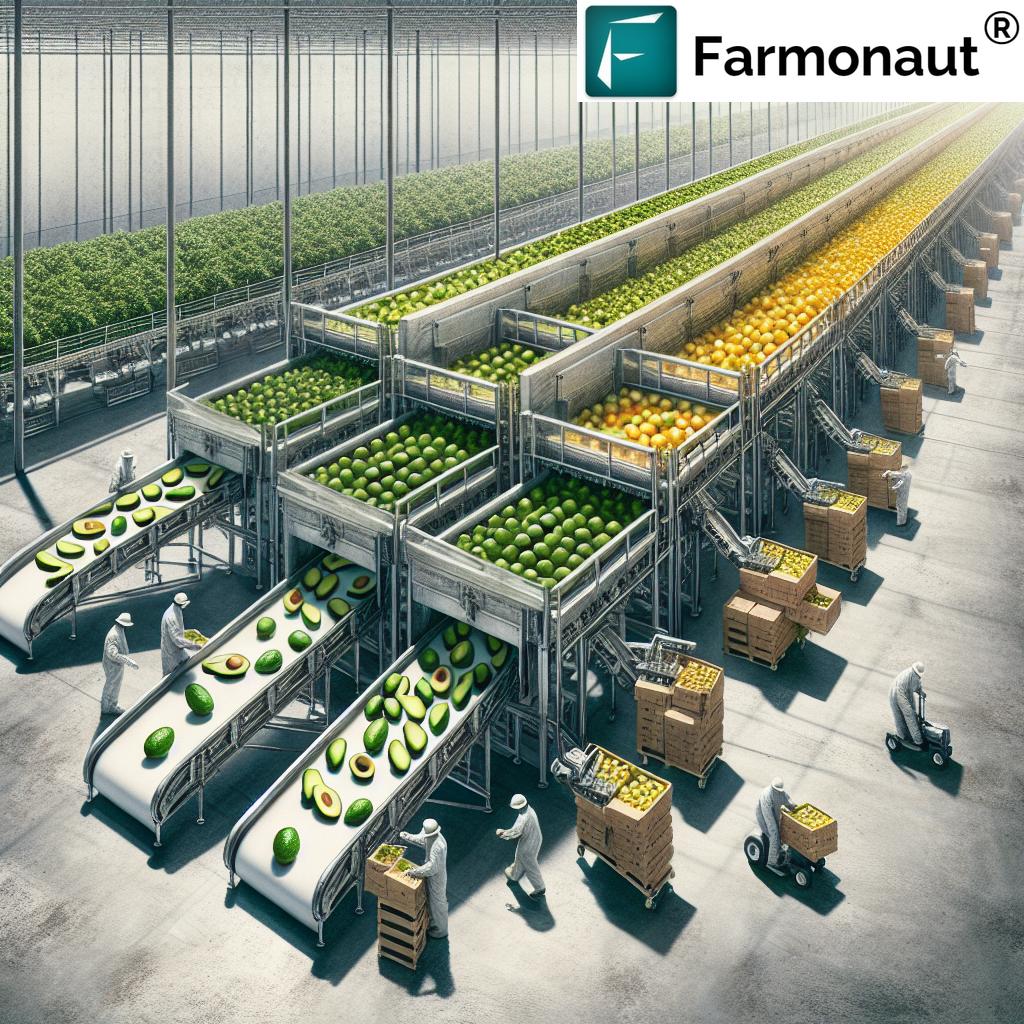Farm Laborers Shortage: Less Food & Higher Prices
“U.S. farms lost over 200,000 laborers between 2010 and 2020, driving a 15% rise in fruit and vegetable prices.”
Agricultural Labor Shortage in the United States: An Unfolding Crisis
The agricultural labor shortage in the United States has reached unprecedented levels, profoundly affecting farms, food production, and pricing structures nationwide. As one of the world’s leading agricultural producers, the United States relies on a robust labor workforce for the planting, maintenance, and harvest of crops that supply local and global markets. But today, the shortage of available farmworkers is tightening, leading to less food on store shelves and higher prices that directly impact American households.
Several contributing factors fuel this crisis, including stringent immigration policies, demographic shifts in the workforce, increasing operational costs, and the challenges of integrating technology in farming practices. These issues are especially acute in major agricultural hubs like California’s Ventura County and Nebraska, where recent enforcement operations have removed a significant portion of the workforce. As a result, food production challenges are intensifying, leading to tangible effects on crop yields, supply chains, and consumer experience.
In this blog, we’ll analyze the industry trends & latest news around the farmworker shortage in the United States. Drawing on reliable reporting and real-world events, we explore the direct and indirect effects of labor shortage on crop yields, prices, and food security. We’ll also unpack innovative solutions—including policy reforms, alternative labor sources, and technology—that can help address these industry-wide challenges.
“Labor shortages caused a 20% drop in some crop harvests, leading to increased imports and higher grocery bills nationwide.”
What Is Driving the Farmworker Shortage in the United States?
To truly grasp the scale of the current agricultural labor shortage, we must examine its contributing factors. Let’s break down the core issues fueling this crisis in the United States:
- Immigration Enforcement and Policies:
The impact of immigration policies on agriculture cannot be overstated.
For decades, undocumented workers have filled a significant portion of the agricultural workforce. Recently, strict immigration enforcement—including raids by agencies like ICE (U.S. Immigration and Customs Enforcement)—has led to the detention and deportation of thousands employed in plant, harvest, and processing operations.
These disruptions have left hundreds of farms and processing plants understaffed, jeopardizing the production of key crops and livestock products.
See details here. - Demographic Shifts:
The agriculture workforce demographic shifts reveal worrying trends: existing workers are aging, with many near retirement. Meanwhile, the number of younger professionals entering agriculture is not enough to replace them. This leads to a gradual but significant reduction in available labor, especially during peak operations such as seasonal harvests.
Learn more about demographic trends. - Economic Pressures and Costs:
Rising labor costs—often through legal work programs like H-2A—are unsustainable for many smaller farms. Compounded by inflation, increased input costs, and market volatility, these rising expenses limit a farm’s ability to compete or invest in new technology in farming practices.
Explore the economic impacts. - Workforce Shifts & Societal Trends:
Socioeconomic changes mean fewer Americans are willing to take on farm labor jobs, particularly in field-related, labor-intensive work. Instead, workers are shifting toward service industries or urban employment, exacerbating the shortage of agricultural workers. - Integration Challenges with Technology:
While technology in farming practices has enormous potential, many smaller farms face hurdles in adopting advanced equipment or digital solutions, either due to capital constraints or lack of technical training.
The Impact of Labor Shortage on Agriculture & Food Supply
The repercussions of the ongoing agricultural labor shortage are visible at every stage of the food supply chain — affecting farmers, processors, retailers, and consumers alike. Let’s review the cascading effects:
1. Decreased Productivity & Crop Yields
The most visible outcome of the farmworker shortage in the United States is in the reduction of productivity across farms. Without sufficient available labor to efficiently maintain and harvest crops,
- Fields are left partially or entirely unharvested.
- Significant food waste results from produce that never reaches the market.
- Crop yields often fall below potential, especially for labor-intensive crops like strawberries, avocados, or specialty vegetables.
For example, California’s Ventura County and Nebraska have suffered substantial disruptions to food production capacity following large-scale ICE raids and workforce arrest operations. The reduction in laborers meant some facilities dropped to just 20% of their usual production capacity—an alarming figure with severe downstream effects.
2. Food Production Challenges Ripple Across the Sector
Food production challenges caused by labor shortages do not stop in the field. When harvests decline, processors and distributors have less product to move. This impacts both the fresh produce market and manufacturers of processed foods.
- Short supply drives up prices not only for fresh products but also for all food products requiring these inputs further down the supply chain.
- Some operations compensate for the lack of local supply by increasing food imports, raising costs, and reducing freshness.
3. Rising Food Prices in Agriculture
These compounded problems contribute to rising food prices agriculture throughout the United States. According to recent estimates,
- The reduction in available food supply drives up consumer demand and prices.
- Markets are seeing price increases for fruit, vegetables, meat, and processed products, with some categories rising by 15% or more.
- Grocery stores and restaurants alike must adjust pricing to reflect scarcity and higher raw material costs.
View Atlantic report on food prices.
4. Disruption to Farm Economics & Rural Communities
The current shortage of agricultural labor also places enormous pressure on rural economies where farming is a critical employer. Smaller farms, unable to absorb soaring labor costs or redesign production systems, are hardest hit. This creates a ripple effect:
- Local economies weaken, accelerating workforce shifts and further shrinking the available labor pool.
- Growers may experiment with alternative labor sources for farms or pivot to less labor-intensive crops.
- Some operations may consider shutting down or consolidating, reducing employment opportunities further.
Ultimately, the entire food supply chain suffers as disruptions at one stage impact every link down the line.
From Field to Table: How the Labor Shortage Affects Food Supply Chain
The effects of labor shortage on crop yields quickly ripple from the farm gate to supermarket shelves. Here’s a breakdown of the process:
- Reduced Harvest: When there aren’t enough workers to plant, maintain, and harvest, sections of farm fields go unpicked, resulting in unharvested crops and increased food waste.
- Production Bottlenecks: Meat and produce processing plants operate at reduced capacity following labor disruptions. Learn about the Nebraska case here.
- Supply Chain Gaps: Distributors, wholesalers, and retailers have fewer goods to move. Lower supplies worsen as consumer demand holds steady or rises.
- Rising Prices: With less produce reaching consumers, market prices increase. Grocers and restaurants must deal with less available inventory and higher base costs.
- Ripple Effects: The food chain is interconnected—delays or losses at any stage impact the next, amplifying food insecurity and inflation pressures.
Notably, the impact isn’t just immediate. Ongoing shortages may nudge producers to switch to more mechanized crops, change operation practices, or even exit certain markets—altering the entire landscape of American agriculture.
Farm Labor Shortage, Crop Production & Food Prices: Comparative Trends (2019–2024)
This table shows estimated correlations between farm labor shortages, crop production changes, and food price increases in the United States over recent years.
- Note: Values are based on public trend reports and estimates illustrating the overall direction of labor, production, and prices. The numbers highlight strong correlations between a dwindling labor force and both production losses and price inflation.
“Labor shortages caused a 20% drop in some crop harvests, leading to increased imports and higher grocery bills nationwide.”
Multifaceted Solutions to Agricultural Labor Shortages
Addressing the farmworker shortage in the United States requires a comprehensive, collaborative approach. Here are some solutions to agricultural labor shortages being explored in the industry:
1. Policy Reforms for Workforce Stability
Legislative solutions—such as the Farm Workforce Modernization Act—aim to stabilize the workforce by providing clearer pathways to legal status for undocumented workers employed in agriculture. These reforms are designed to secure more reliable labor supply and reduce fear-driven absenteeism stemming from immigration enforcement.
Read more about the Farm Workforce Modernization Act
2. Integrating Technology in Farming Practices
Technology in farming practices (such as autonomous tractors, drones, AI-driven farm management, and digital monitoring platforms) is helping producers reduce their reliance on manual labor.
- Autonomous tractors can operate large areas with minimal human supervision.
- Remote crop health monitoring platforms, like Farmonaut, utilize AI and satellite data for proactive decision-making on irrigation, nutrient management, and pest control.
- Drones and robotics can assist with planting, fertilizing, and harvesting, reducing the number of seasonal workers required.
However, the full benefits of technological integration demand targeted training initiatives so farm operators can efficiently manage, process, and leverage digital data and automated machinery.
3. Educational & Training Initiatives
Educational programs are vital in equipping the future agriculture workforce with the necessary technical and digital skills. Through partnerships with agriculture schools and universities, students can experience hands-on training using the latest technology and methods in both field and digital environments.
- Internships and apprenticeship programs connect students with real farms for practical exposure.
- Upskilling current workers enables farms to keep up with automation and digital recordkeeping.
See solutions and challenges for agricultural labor shortages
4. Alternative Labor Sources for Farms
To address workforce shortages, the industry is considering alternative labor sources for farms and adjusting production methods:
- Engaging contract operators or seasonal worker programs to cover peak periods.
- Shifting from labor-intensive crops to more mechanized or no-till production systems, lowering overall labor needs.
- Experimenting with production system redesigns aimed at boosting efficiency and output using fewer laborers.
Farmonaut: Empowering Farms to Address Labor Shortages with Precision Technology
Recognizing the urgency of the agricultural labor shortage, Farmonaut offers cutting-edge satellite-based farm management solutions designed to make precision agriculture affordable and accessible for all. By integrating innovative technology in farming practices, Farmonaut empowers farmers, agribusinesses, governments, and institutions with actionable, data-driven insights to optimize their operations—even with a reduced workforce.
-
Satellite-Based Crop Health Monitoring:
Farmonaut’s platform leverages multispectral imagery for real-time monitoring of crop health, soil conditions, and vegetation indices (e.g., NDVI). Farmers can act quickly to maintain or improve yields, mitigate crop stress, and reduce resource waste—critical advantages in light of limited labor. -
Jeevn AI Advisory System:
Offers AI-driven personalized advice and real-time weather forecasting, helping users make smarter planting, fertilizing, and irrigation decisions. -
Blockchain-Based Product Traceability:
Ensures transparency, reliability, and accountability in the food supply chain by enabling producers and retailers to track products from field to shelf. Learn about Farmonaut Traceability Solutions. -
Fleet and Resource Management:
Optimizes logistical operations, reducing operational costs and ensuring the efficient deployment of equipment, vehicles, and personnel. Farmonaut Fleet Management Tools simplify the tracking, scheduling, and management of agricultural fleets. -
Carbon Footprinting:
Tracks and manages carbon emissions in agriculture, helping producers meet sustainability goals and comply with environmental regulations. Explore Carbon Footprinting Solutions. -
Crop Loan and Insurance Support:
Farmonaut’s satellite-based crop verification assists financial institutions in offering loans and insurance to farmers with confidence. Understand Crop Loan & Insurance Tools.
All of these solutions are designed to enable smarter, faster decision-making, help farms operate efficiently, and boost crop production—despite the reduction in available labor.
Developers and agribusinesses can also access Farmonaut’s advanced satellite and weather data through powerful APIs and detailed Developer Docs, enabling seamless technology integration at scale.
For large-scale agricultural operations, Farmonaut’s Agro Admin App facilitates end-to-end farm management, from plantation planning to resource allocation, ensuring every acre is monitored and managed efficiently.
Featured Videos: The Technology Impact in Modern Agriculture
Farmonaut Subscription Plans: Affordable Access for Every Farm
Farmonaut makes advanced satellite crop monitoring, AI advisory, and resource management accessible for farms of all scales. Subscribe for tailored solutions for your needs, all accessible via web, iOS, or Android.
Frequently Asked Questions: Agricultural Labor Shortage & the Future of Farming
Q1: What are the main causes of the agricultural labor shortage in the United States?
The primary causes include stricter immigration policy enforcement, demographic trends showing an aging workforce and few young entrants, rising labor costs and economic pressures on farms, and difficulties integrating technological alternatives and digital agriculture practices—especially in smaller operations.
Q2: How is the labor shortage affecting food prices and grocery stores?
The shortage leads to reduced yields and more food waste, which lowers supply at every level of the food chain. This supply pressure, combined with persistent consumer demand, directly results in rising food prices agriculture, affecting grocery bills and restaurant meal pricing nationwide.
Q3: What long-term solutions exist for addressing the farmworker shortage?
A combination of policy reforms (such as the Farm Workforce Modernization Act), investments in technology in farming practices (automation, remote monitoring), educational programs for upskilling the next-generation workforce, and experimenting with alternative labor sources for farms and no-till or mechanized cropping systems are all essential to overcoming this issue sustainably.
Q4: How does Farmonaut help address challenges created by the labor shortage?
Farmonaut provides satellite-based crop health monitoring, AI advisory, traceability, resource management, and environmental footprinting tools, enabling farmers and agribusinesses to operate more efficiently and maintain or increase yields even with fewer available workers. Through cost-effective, data-driven insights, Farmonaut helps optimize every aspect of farm management—from crop health to logistics and beyond.
Q5: Can small farms benefit from digital or satellite-based tools?
Absolutely. One of Farmonaut’s core value propositions is making precision agriculture and real-time crop monitoring affordable for small and medium-sized operations—democratizing access to the tools previously reserved for large agribusinesses.
Conclusion: Charting a Sustainable Path Forward
The agricultural labor shortage in the United States is reshaping the future of American farming. Driven by immigration policy challenges, demographic shifts, and economic pressures, this issue impacts every link in the food supply chain—from field to fork. The effects of labor shortage on crop yields, rising food prices, and market volatility require innovative, multifaceted strategies for effective resolution.
Policy reforms must be complemented by smart adoption of technology, practical workforce training, and the pursuit of alternative labor sources for farms. Companies like Farmonaut are leading the way in enabling data-driven agriculture, helping farmers and agri-enterprises optimize resources and navigate labor shortages with confidence.
By empowering every farm operator with affordable, actionable insights, and advocating for modernized workforce policies, we can ensure America’s agricultural sector not only survives—but thrives—through the challenges ahead.


















